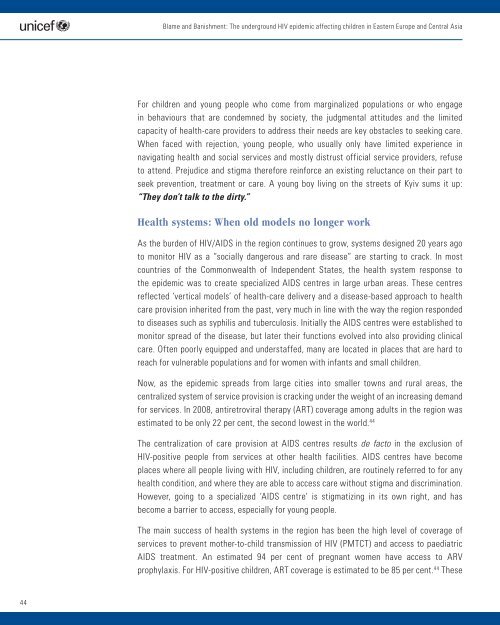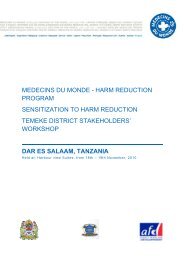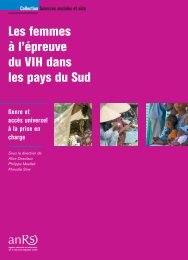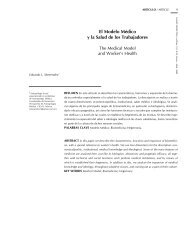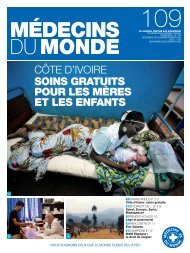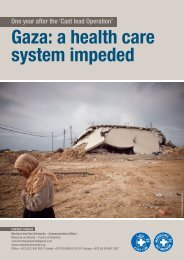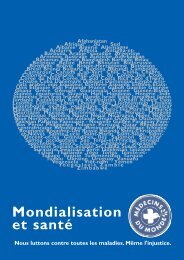Blame & Banishment - Médecins du Monde
Blame & Banishment - Médecins du Monde
Blame & Banishment - Médecins du Monde
You also want an ePaper? Increase the reach of your titles
YUMPU automatically turns print PDFs into web optimized ePapers that Google loves.
<strong>Blame</strong> and <strong>Banishment</strong>: The underground HIV epidemic affecting children in Eastern Europe and Central Asia<br />
For children and young people who come from marginalized populations or who engage<br />
in behaviours that are condemned by society, the judgmental attitudes and the limited<br />
capacity of health-care providers to address their needs are key obstacles to seeking care.<br />
When faced with rejection, young people, who usually only have limited experience in<br />
navigating health and social services and mostly distrust official service providers, refuse<br />
to attend. Prejudice and stigma therefore reinforce an existing reluctance on their part to<br />
seek prevention, treatment or care. A young boy living on the streets of Kyiv sums it up:<br />
“They don’t talk to the dirty.”<br />
Health systems: When old models no longer work<br />
As the burden of HIV/AIDS in the region continues to grow, systems designed 20 years ago<br />
to monitor HIV as a “socially dangerous and rare disease” are starting to crack. In most<br />
countries of the Commonwealth of Independent States, the health system response to<br />
the epidemic was to create specialized AIDS centres in large urban areas. These centres<br />
reflected ‘vertical models’ of health-care delivery and a disease-based approach to health<br />
care provision inherited from the past, very much in line with the way the region responded<br />
to diseases such as syphilis and tuberculosis. Initially the AIDS centres were established to<br />
monitor spread of the disease, but later their functions evolved into also providing clinical<br />
care. Often poorly equipped and understaffed, many are located in places that are hard to<br />
reach for vulnerable populations and for women with infants and small children.<br />
Now, as the epidemic spreads from large cities into smaller towns and rural areas, the<br />
centralized system of service provision is cracking under the weight of an increasing demand<br />
for services. In 2008, antiretroviral therapy (ART) coverage among a<strong>du</strong>lts in the region was<br />
estimated to be only 22 per cent, the second lowest in the world. 44<br />
The centralization of care provision at AIDS centres results de facto in the exclusion of<br />
HIV-positive people from services at other health facilities. AIDS centres have become<br />
places where all people living with HIV, including children, are routinely referred to for any<br />
health condition, and where they are able to access care without stigma and discrimination.<br />
However, going to a specialized ‘AIDS centre’ is stigmatizing in its own right, and has<br />
become a barrier to access, especially for young people.<br />
The main success of health systems in the region has been the high level of coverage of<br />
services to prevent mother-to-child transmission of HIV (PMTCT) and access to paediatric<br />
AIDS treatment. An estimated 94 per cent of pregnant women have access to ARV<br />
prophylaxis. For HIV-positive children, ART coverage is estimated to be 85 per cent. 44 These<br />
44


